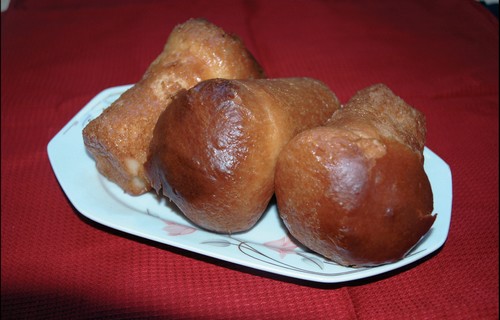Prodotti Tradizionali della Campania
Babà

La storia del babà affonda le sue radici nella Polonia del XVIII secolo, alla corte di re Stanislao Leszczinski, che, si narra, rovesciò accidentalmente una bottiglia di rhum su un dolce realizzato per lui dai suoi pasticcieri, dando vita al babà. Fu Stanislao stesso a deciderne il nome, scegliendolo per due motivi: primo perché lo volle dedicare ad Alì Babà, protagonista del celebre racconto tratto da Le Mille e Una Notte, libro che il sovrano amava leggere e rileggere, e, secondo, perché la parola “babà” è traducibile con “vecchia signora”, in riferimento alla mollezza della pasta del dolce, particolarmente adatta ai senza denti. Il babà arrivò presto a Parigi, dove in tanti lo conobbero e lo apprezzarono. A portarlo, successivamente, a Napoli furono i “monsù”, deformazione della parola monsieur, gli chef francesi che prestavano servizio presso le nobili famiglie napoletane. A Napoli il babà si è perfezionato, acquisendo le caratteristiche che lo distinguono: la particolare morbidezza, ottenuta mediante il procedimento di bagnarlo con acqua e zucchero, e la caratteristica forma bombata, simile a un fungo; è per questo che oggi il babà comunemente considerato una specialità di origine Campana. Il dolce è a base di farina di grano tenero, uova, burro o strutto, sale, zucchero e lievito di birra, lievita per due volte e si cuoce in forno; prima di essere servito va bagnato con una soluzione di acqua e zucchero, aromatizzata al limone e corretta al rhum; il babà classico o guarnito con panna o creme pasticciere varie si può trovare in tutti i laboratori della regione.
![]() The
origin of the babà cake is to be found in 18th century Poland,
at the court of King Stanislao Leszczinski. The story recounts that the
king spilt by mistake a bottle of rhum on top of a cake, made for him
by his cooks, so creating the babà. Stanislao personally chose
the name for two reasons: firstly, to dedicate it to Alì Babà,
the famous character from One Thousand and One Arabian Nights, a book
that the king loved to read over and over again, and secondly, because
the word “babà” is translatable as “old lady”,
a reference to the softness of the cake which is particularly useful
for tootheless people. The babà made its way to Paris where it
was greatly appreciated. It was then brought to Naples by the “monsù”,
a distortion of the word monsieur, i.e. the French cooks who served the
Neapolitan noble families. In Naples the babà was then perfected,
finding its distinctive peculiarities: the softness, gained by wetting
it in water and sugar, and the distinctive mushroom-like shape. For these
reasons, the babà today is considered an original specialty from
Campania. The cake is made with soft grain flour, eggs, butter or lard,
salt, sugar, and yeast. It is put to rise twice and is cooked in the
oven and it is wet with a solution of water and sugar, which has been
aromatized with lemon or rum, before being served. The classic babà,
as well as the chocolate and cream varieties, can be found in every workshop
of the region.
The
origin of the babà cake is to be found in 18th century Poland,
at the court of King Stanislao Leszczinski. The story recounts that the
king spilt by mistake a bottle of rhum on top of a cake, made for him
by his cooks, so creating the babà. Stanislao personally chose
the name for two reasons: firstly, to dedicate it to Alì Babà,
the famous character from One Thousand and One Arabian Nights, a book
that the king loved to read over and over again, and secondly, because
the word “babà” is translatable as “old lady”,
a reference to the softness of the cake which is particularly useful
for tootheless people. The babà made its way to Paris where it
was greatly appreciated. It was then brought to Naples by the “monsù”,
a distortion of the word monsieur, i.e. the French cooks who served the
Neapolitan noble families. In Naples the babà was then perfected,
finding its distinctive peculiarities: the softness, gained by wetting
it in water and sugar, and the distinctive mushroom-like shape. For these
reasons, the babà today is considered an original specialty from
Campania. The cake is made with soft grain flour, eggs, butter or lard,
salt, sugar, and yeast. It is put to rise twice and is cooked in the
oven and it is wet with a solution of water and sugar, which has been
aromatized with lemon or rum, before being served. The classic babà,
as well as the chocolate and cream varieties, can be found in every workshop
of the region.